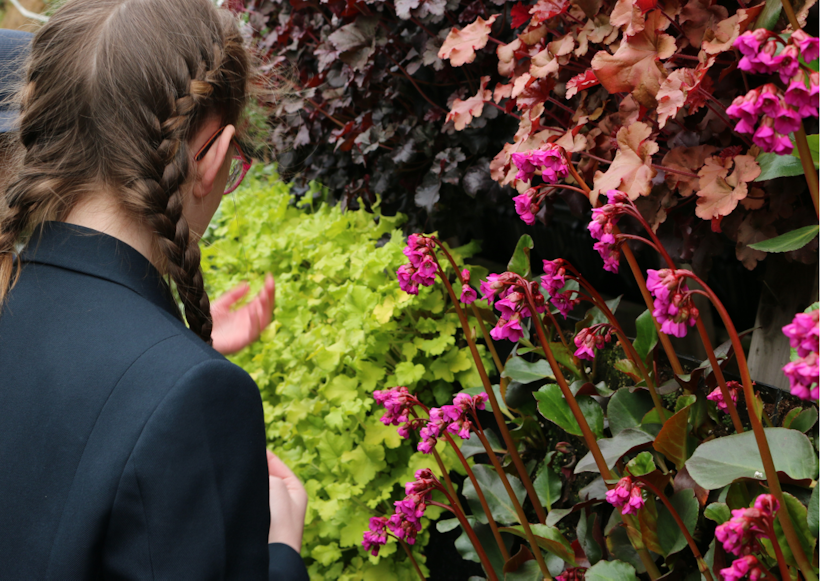According to the United Nations, over 60% of the world’s population will live in urban areas by 2030. Managing these urban environments and ensuring the health and well-being of their inhabitants is one of the biggest challenges facing the twenty-first century.
As the world's population grows, natural spaces are increasingly engulfed by the built environment, severely limiting people’s access to sunlight, fresh air, and green spaces. This lack of exposure to the natural environment has not only been shown to have a detrimental effect on our population's physical and mental well-being, causing problems such as depression, respiratory illnesses, and anxiety; but it has also led to our cities and towns becoming dull, and unsightly concrete jungles.
It is therefore crucial for urban planners and policymakers to prioritise the integration of natural spaces into our built environments, ensuring that everyone has access to nature and can reap its benefits.
Biophilic design is an approach to architecture and interior design that seeks to reconnect people with nature in the built environment. This design philosophy recognises that humans have an innate connection with nature and that exposure to natural elements through green infrastructures such as living walls can not only improve health and well-being but also create more inviting and vibrant spaces which people can enjoy.
In this article, we will explore the role of biophilic design in creating vibrant and healthy communities.
Biophilic Design Improves Air Quality
Biophilic design elements such as vertical gardens and living roofs are a great way to incorporate nature into our urban environments, particularly where ground space is limited.
Harnessing the power of native plant species, these green infrastructures not only encourage the reformation of important ecosystems but also help to purify the air. In fact, data has shown that 1m² of living wall extracts 2.3kg of CO2 emissions per annum from the air, and produces 1.7kg of oxygen. If we put this into perspective, an average 250m² living wall will produce 425kg of oxygen on average per year – a huge improvement to the overall air quality of the surrounding environment!
It is a well-known fact that poor air quality leads to numerous health issues and is gradually having a negative impact on the planet’s atmosphere. According to the World Health Organisation, polluted air is the reason behind seven billion people’s death annually, which is a sobering statistic.
By incorporating biophilic design elements into our built environments, we can reduce pollution-related health issues, and promote healthier lifestyles within our communities.
Biophilic Design Brings Communities Together
Biophilic design can bring communities together and contribute to reducing crime rates by creating more attractive, safe, and welcoming public spaces. Incorporating nature into urban areas can create a sense of belonging and pride in the community, encouraging residents to take care of their neighbourhoods and engage in activities that promote social cohesion.
By creating more green spaces, biophilic design can provide opportunities for community members to interact with each other and enjoy outdoor activities together. For example, community gardens, parks, and public spaces designed with biophilic principles can become gathering places for residents, where they can meet their neighbours, participate in events, and form social connections. Additionally, research has shown that well-designed green spaces can reduce crime rates by discouraging criminal activities such as graffiti by creating more visually appealing environments.

Biophilic Design Creates Attractive and Inviting Spaces
By incorporating natural materials, patterns, colours, and textures, biophilic design can create a visually appealing environment that is more connected to nature, which can help to reduce stress, promote relaxation, and improve overall well-being.
Adding elements of nature into the built environment is particularly important for cities with an abundance of concrete structures. As you can see in the image below, the lack of nature in this space creates a dull and uninviting atmosphere.

As you can see in the image below, adding just a small touch of nature to this same space instantly creates a more vibrant and inviting atmosphere.

Biophilic Design Improves Mental Wellbeing
There is growing evidence to suggest that biophilic design can improve mental well-being, in addition to many other benefits.
In fact, one study published in the International Journal of Environmental Research and Public Health found that exposure to nature and natural elements, as found in biophilic design, can lead to reduced stress, improved cognitive function, and enhanced mood. The study surveyed 118 employees who worked in either a conventional office or a biophilic office and found that those who worked in the biophilic office reported lower levels of perceived stress and higher levels of job satisfaction and productivity.
This is particularly important for those living in urban environments, where anxiety and depression rates are particularly high.
Biophilic design through Living walls and roofs from Viritopia
Are you in the early stages of development? Are you looking to capitalise on environmental assets? Are you interested in learning more about living walls? Then look no further. Our team at Viritopia has you covered.
Viritopia has over 20 years of experience designing and maintaining biophilic infrastructure to create a detailed analysis of how a scheme will meet regulatory requirements. We help with a faster planning process and provide you with what’s needed to take your project to the next level. Head to our site to book a living wall consultancy or explore more about our green walls and their benefits.


